Back with a vengeance
As Daniel Craig put the Aston Martin DB5 through its paces while filming the new Bond movie, WISH got close enough to the action to see the dust fly.
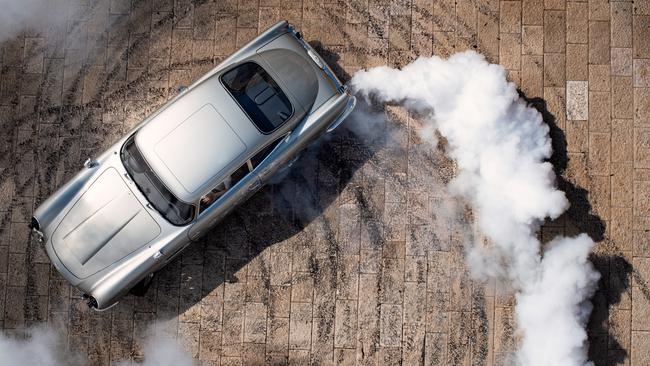
He’s broken teeth and lost the tip of a finger during filming. Worse still, he’s ripped some particularly expensive Savile Row suits. Daniel Craig’s portrayal of James Bond comes closest to the character Ian Fleming envisioned when he sat at his writing desk in1952 and began sketching the character outline for a flawed but enigmatic British secret service agent. The hard-drinking, punch-throwing, woman-seducing spy first seen in Fleming’s 1953 novel Casino Royale was powerfully resurrected by Craig in the 2006 movie of the same name. The film’s stunt coordinator, Gary Powell, has commented on how the actor “gets his hands very dirty”.
For one day only, WISH has been invited to the set of the forthcoming 007 blockbuster No Time To Die, in Matera, southern Italy, to see how the franchise’s fabled car scenes are pieced together. And already Craig has been getting his paws mucky; during the first filming phase in Jamaica, he fractured his ankle during an action scene and was flown to the US for surgery.
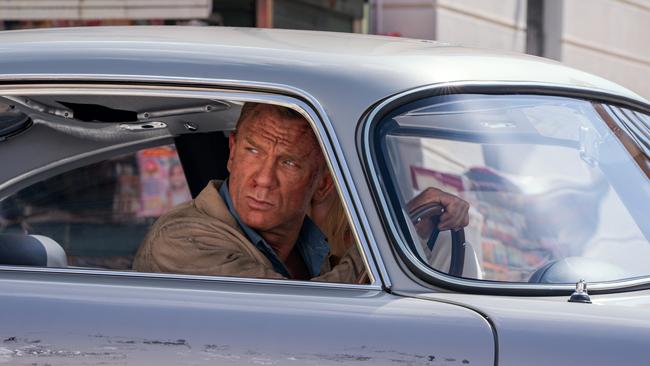
“Humans are involved, and humans make errors,” says Mark Higgins, one of No Time To Die’s lead stunt drivers – and Craig’s body-double – on the risks involved in film production. “And then there’s all the machinery. The levels of safety on Bond are of a very high standard, but it’s a living thing so things can happen.”
Matera is Italy’s best-kept secret; a humble, photogenic city that quietly flaunts its UNESCO World Heritage Site status, granted on account of the otherworldly network of cave dwellings carved into its hillside, believed to have been inhabited for around 10,000 years. Florence and Rome look overly polished in comparison. For those not prone to claustrophobia, some caves have been converted into boutique spa hotels or low-lit gourmet eateries. And yet Matera has managed to slip through the net of mainstream tourism – until now.
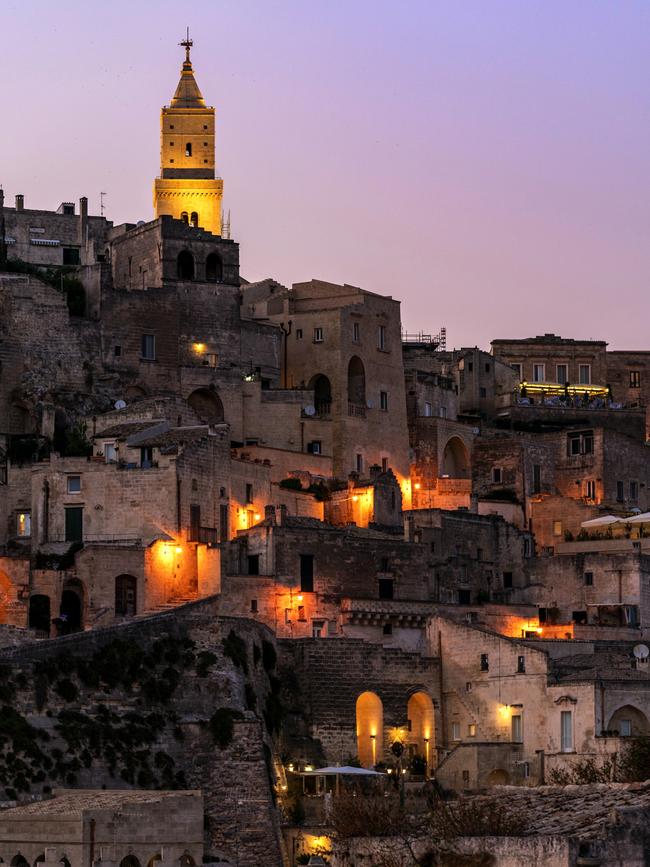
The area around San Giovanni Piazza, where today’s scenes will be filmed, is on security lockdown. We’re escorted through a tight cordon and onto a sun-drenched viewing balcony overlooking the square. It’s rare for the press to be given this level of access, particularly on a movie of Bond’s prestige. You’d have to be cryogenically frozen not to feel a surge of electricity at being this close to the action.
As you’d expect, wider plot details for No Time To Die are skeletal at best. But we are copied in on the mini-storyline unfurling beneath us in the piazza. Bond has just been stalked at high-speed through Matera’s narrow, cobbled streets by a gang of machine-gun-toting villains – the baddies driving a classic Range Rover and a sinister Jaguar sedan, 007 in his beloved 1960s Aston Martin DB5.
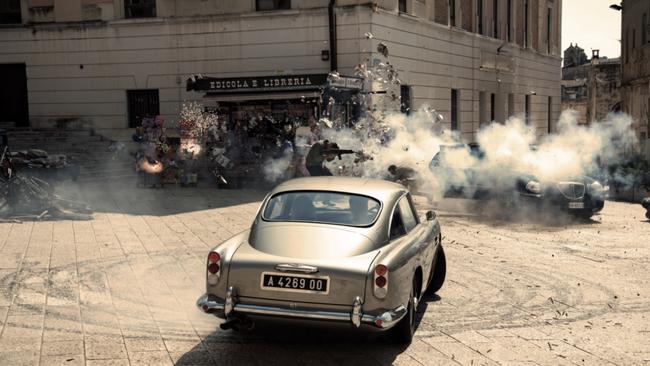
And now Bond is trapped inside the vehicle. The villains are spraying the Aston’s pristine flanks with bullets. Sparks explode from the bodywork. The noise – generated by explosive devices placed around the piazza’s perimeter, not the guns – is vicious, like a fireworks display being held inside your cochlea. We’ve been supplied with plugs, but it’s not our ears that need saving. It’s our eyes, subjected to the torture of seeing a precious vintage DB5 turned into a metallic moon crater.
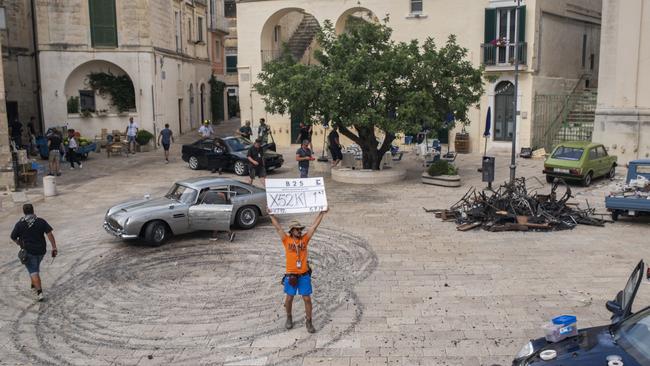
We needn’t have worried. The DB5, it’s soon revealed, is one of eight fully driveable, action-ready replicas built by Aston Martin’s special-projects division especially for No Time To Die, most of which are being stored in the courtyard of a former convent adjacent to the main set. Oh, and this one is also 100 per cent bulletproof.
“We’ve got specific cars for specific scenes,” says the head of stunt cars, Neil Layton. “The DNA of each individual car is the same but mechanically each one is set up differently, so we’ve got cars especially for high-speed stuff, for drifts. You could park this DB5 next to an original and you wouldn’t be able to tell the difference… Aston have built an incredibly beautiful car.”
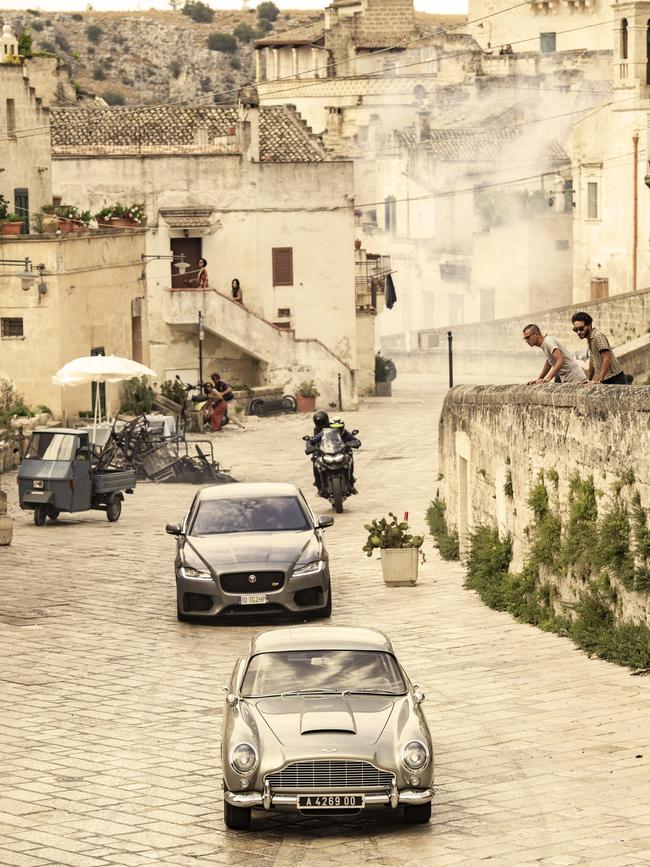
The histories of Aston Martin and James Bond – and their brand values of luxury, timeless cool, a hint of refined recklessness – are closely intertwined, beginning with the first DB5 in 1964’s Goldfinger and continuing to the present day. Four Astons will star in No Time To Die, including a 1980s V8 Vantage, a new DBS Superleggera and a tantalising preview of the Valhalla hypercar, released in 2021.
In a career spanning 15 Bonds, special effects supervisor Chris Corbould has seen more than his fair share of priceless metal built, driven and sometimes destroyed. To a backing track of explosions, as the villains inflict more first-degree murder on the DB5, he explains how, unlike a certain very fast and very furious movie franchise that won’t be named, the Bond team shuns CGI wherever possible. “I fight endlessly to do things for real; it brings something extra to the table,” he insists. For the popcorn-dropping moment in Skyfall, in which a whole London underground train crashes through a ceiling, Corbould and his team built life-size replicas of the carriages, each 20m long and weighing 64 tonnes. “Originality makes great scenes,” he says. “Be it a truck flip, a tank chase or that train scene, you hadn’t seen any of those before you saw them in Bond.”
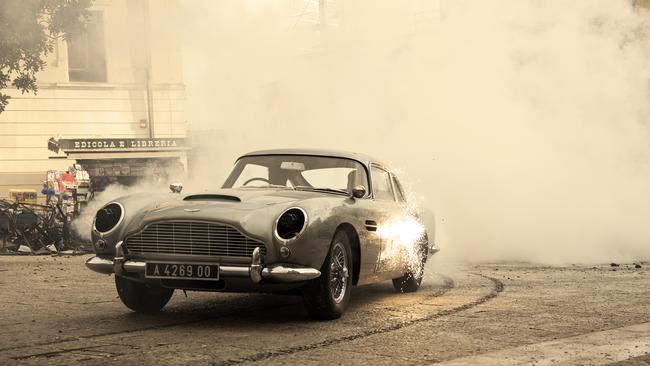
Another sequence destined to be carved into Bond folklore is being filmed right now in the piazza. To escape the villains, 007 flicks a switch in his DB5, engaging headlamp-concealed Gatling guns, then breaks into a “donut”, spitting endless circles of bullets at his foes.
Well, that’s what audiences will see when No Time To Die is released globally on November 12. In actuality, the once-flawless DB5 looks like it’s been attacked by a team of rogue builders; the bodywork is festooned with scaffolding to hold a massive IMAX camera that will capture the action from the car’s perspective. Meanwhile, to mimic the effect of the donut, four crew members are gripping the scaffold poles and physically whirling the DB5 around. It’s another example of the analogue trickery, hard graft and forensic attention to detail that as if by magic gives birth to a slick, swaggering final product many months along the line.
“After going down the digital route, a lot of movies are trying to bring back the realness,” says Mark Higgins. Even if that does mean a broken 007 tooth or ankle here and there.

To join the conversation, please log in. Don't have an account? Register
Join the conversation, you are commenting as Logout